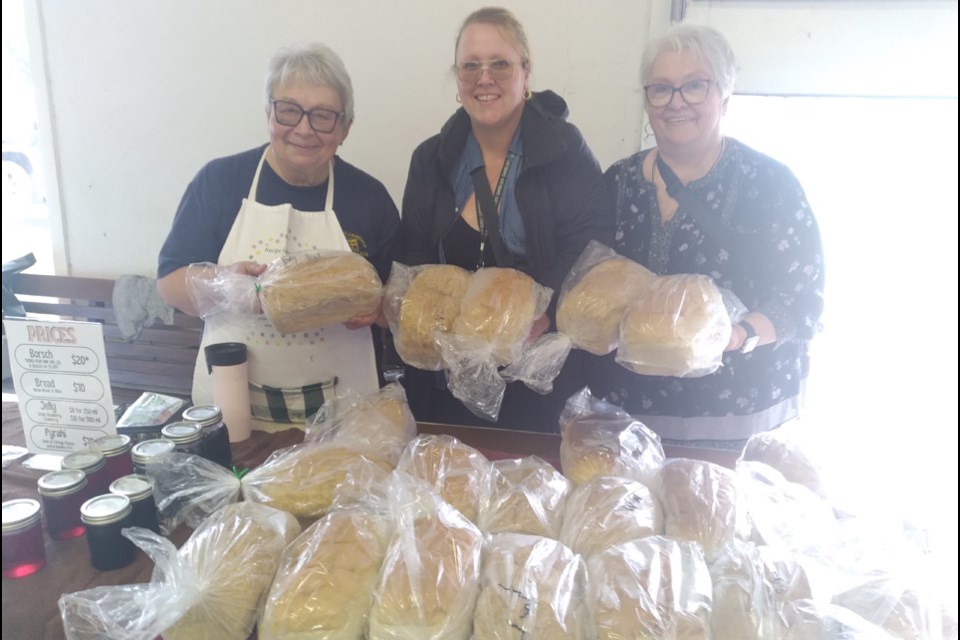VEREGIN — Heritage Day, celebrated annually on the third Sunday in July, was held at the National Doukhobor Heritage Village in Veregin on July 20 with socializing along with helpings of Doukhobor food.
“Heritage Day is a time to allow us to get back to the spirit of Doukhobor-ness,” said Walter Ostoforoff of Canora, chair of the heritage village committee.
“We get together and swap stories,” Ostoforoff said. “We were all raised with this atmosphere, which has often faded in modern times.
“We are proud of our Doukhobor past and of what Doukhobors have done despite hard times,” he said. “We are now all part of society.”
Ostoforoff said that Heritage Day attracts many people, not just Doukhobors, and this year among the guests is a filmmaker from Ontario who is producing footage for a documentary film.
“They come from all over,” he said, adding that the food helps “bring them in.”
In the past, the Heritage Day celebration has included a program, often highlighted by performances by a Doukhobor choir, he said, explaining that the numbers of district Doukhobors able to sing with a choir has dwindled and the few remaining singers in Veregin, Kamsack and Canora, require voices from Doukhobors in Saskatoon or other places to create a choir.
The Saskatoon group could not come this year, he said, expressing regret. The choirs have been much appreciated and in the past, members of the audience would often sing along with the choir.
This year, the focus is on the meal, he said, urging everyone to try the blinis, which are a type of crepe served with Saskatoon and rhubarb or strawberry jam, melted butter, sour cream or whipped cream.
Loaves of bread baked in a traditional wood-fired clay oven, as well as native fruit jellies, borsch and pyrohy made of raised dough filled with cottage cheese, beans or saskatoons were available for sale.
The event included a raffle and the sale of 50/50 tickets to help raise funds for the village and visitors were encouraged to tour the grounds which includes a museum, the iconic Prayer Home, a statue of Leo Tolstoi and several buildings salvaged from the many former Doukhobor villages that dotted the area at the beginning of the 20th century after the arrival of Doukhobors from Russia.




